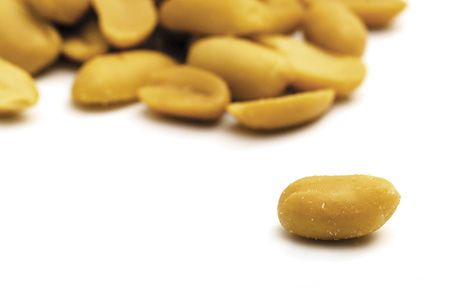Tired of veterinary clients who don't believe in fleas? Use a peanut allergy analogy
Repeat after us: You do not have to see the flea for the flea to cause a reaction.

Real talk: There are more than 2,000 species and subspecies of fleas and dogs and cats can be the transient host for any of these species. Alas, we know you have clients who refuse to believe that fleas are a real problem for their pets.
Here's where the genius of Allison Kirby, DVM, DACVD, of Animal Dermatology Clinic in Marina Del Rey, California, comes in: The next time you're speaking with a client who doesn't "believe" that fleas can affect their pet, use a peanut allergy to help them grasp the concept.
If a person is allergic to peanuts, one peanut may touch their food and they will have a reaction. That person may have never even needed to see the peanut to know what happened. Which, really, when you think about it, is just like fleas. You don't need to see them to know they're there.
After offering up that analogy, Dr. Kirby suggests the following steps:
1. Be sure to ask for a thorough dermatologic history of the pet. (We'll make it easy with a free form!) Repeat the history back to the client and wait for the client to validate that you have the story straight.
2. Then, tell the client that the dog's itching and secondary infections in the back half of the body is textbook for flea allergy. Explain that every flea medication, just like every drug of any kind, wanes in efficacy from the time it is given to the time the next dose is due. A pet receiving good monthly flea control will never have an infestation, because fleas that infest the pet will die before they have enough time to lay eggs. However, for a pet that is sensitive, a few hours of feeding before the flea dies may be enough to cause a reaction. For this reason, hypersensitive pets do better on bi-monthly flea prevention.
3. Compliment the owner on the cleanliness of their home and their pet, and advise them you are sure their pet would never have an infestation.
4. Then remind them that with all the good work they are doing and money they are spending on an allergy work-up, it would be a shame for a future flea bite to confound analysis of the itch level and potentially lead you astray in your diagnosis.
Reality bites
On the other hand, some clients may never believe that their flea control works. These clients will need to be educated about the flea lifecycle and feeding behavior. Advise them that while our prescription flea preventives are highly effective, they take time to kill fleas and do not prevent all feeding.1 Fleas will need to bite the pet before being killed by the adulticide. It's likely that pet owners will see live adult fleas on their pet after having given a flea preventive, but it is highly unlikely they will have an infestation when prescription flea prevention is used on a consistent monthly basis.
Remind them that just like with peanuts, we can't create an invisible force field that kills every flea before it jumps onto the pet.
Reference:
1. Dryden MW. Flea and tick control in the 21st century: challenges and opportunities. Vet Dermatol 2009;20:435-440.